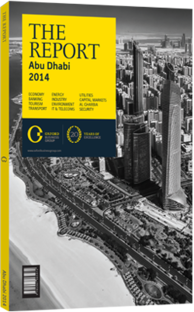Looking ahead: Expanding local refining capacity
While upstream activity may be grabbing all the headlines in Abu Dhabi, there is also substantial investment in the emirate’s midstream and downstream sector. Given the plans to significantly boost domestic oil production in the coming years, Abu Dhabi National Oil Company (ADNOC) has also turned its attention to the refining industry.
Takreer
Abu Dhabi Oil Refining Company (TAKREER), which is a subsidiary of ADNOC, is responsible for refining crude and condensates at two sites in Abu Dhabi. In 2014, the company will add an additional 417,000 barrels per day (bpd) of capacity at the Ruwais site at an investment cost of $9.6bn. This will bring the overall total to 905,000 bpd. There is little surplus capacity with current refining operations. In 2012, capacity stood at 500,000 bpd.
Regional Market
At present, about 60% of refined products are sold within the domestic market. With substantial capacity additions being commissioned in 2014, this may change. However, as several players in the region are looking to build capacity, including Saudi Arabia with three new refineries by 2017, each with a capacity of 400,000 bpd, the environment to export and build margins could be challenging.
Jasem Ali Al Sayegh, the CEO of TAKREER, told OBG, “There is some concern that investments in the region could result in an oversupply for refined petroleum products. Additionally, the scale and complexity of refineries will also be a major factor as the days of small and simple operations are over.” The impact this will have on margins is not clear.
However, Abdulla Ali Al Mansouri, the vice-president of the corporate support division at TAKREER, told OBG, “There are a lot of refineries under construction in the region, but world demand for refined products is also increasing, so I don’t think there will be any problem. In some cases, the return on investment might be a bit longer than normal, but it will still be viable. In our case, the investment has been reviewed from the economic point of view and we are confident on the margins.”
Looking to Asia
Middle Eastern players will have to sell into the increasingly competitive Asian market. The current situation in that region seems challenging. Refining margins in Asia have been falling rapidly of late. A survey by UK consultancy KBC Energy Economics found that a refining plant in Singapore processing Dubai crude will make 16% less in 2013 than the previous year, with a margin of $4.84 per barrel. The company expects this margin to drop by a further 4% in 2014.
Furthermore, the outlook is unlikely to change any time soon. China, one of the most important markets for refined products globally, has been steadily adding capacity. In the first half of 2013, it reached a total refining capacity of 12m barrels per day and became a net exporter of diesel (exporting around 400,000 tonnes in April 2013).
However, rising domestic demand within the UAE could help to offset increasing capacity in foreign markets. “While the majority of added production of refined petroleum products will continue to be exported, a higher percentage will be utilised for domestic purposes,” Al Sayegh told OBG. “This is primarily due to the number of downstream projects that are set to come on-line in the near future.”
Decoupling
Another potential challenge moving forward is that refinery throughput growth may become increasingly decoupled from oil demand growth. This is the result of the increasing global production of natural gas liquids, such as ethane, liquefied petroleum gas (LPG) and plant condensates, which could replace the demand for naphtha and LPG from refineries. According to the US consultancy Energy Security Analysis Inc’s “Global Crude Oil Outlook”, an estimated 875,000 bpd of natural gas liquids could be added to the global oil supply by the end of 2015. As such, the environment for new refineries may be challenging in the coming years.
You have reached the limit of premium articles you can view for free.
Choose from the options below to purchase print or digital editions of our Reports. You can also purchase a website subscription giving you unlimited access to all of our Reports online for 12 months.
If you have already purchased this Report or have a website subscription, please login to continue.

